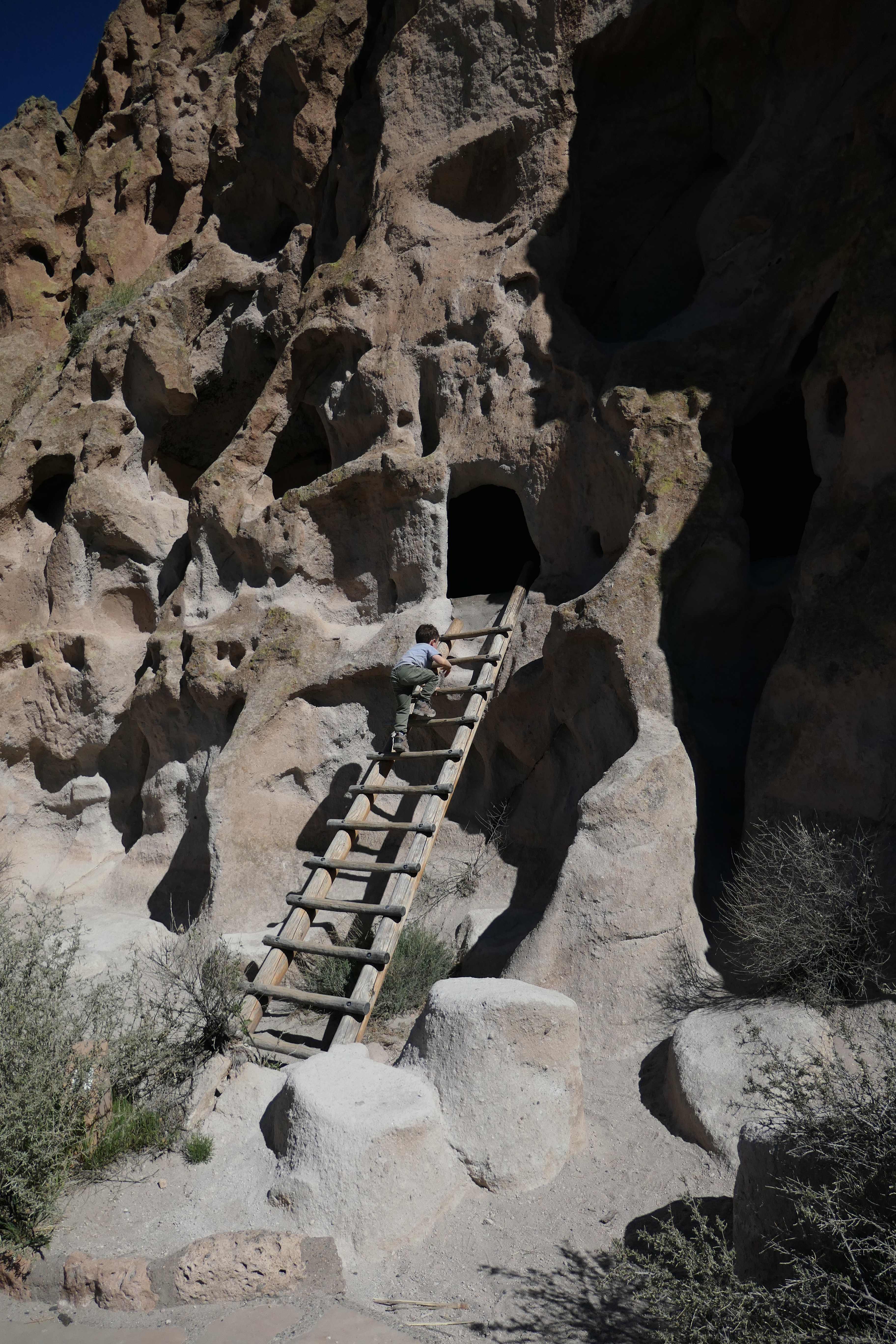On my last full day in New Mexico I drove to Frijoles Canyon to explore the Bandelier National Monument. It is located within the Pajarito Plateau which was formed by two eruptions of the Jemez volcano nearby, more than a million years ago.

Each of these eruptions were about six hundred times more powerful than that of Mount St. Helens in 1980. Just saying.

The rocks you are seeing in the photographs are actually volcanic ash, compacted over time into a crumbly rock called tuff.

It can be easily eroded by the weather or human tools – and indeed the Ancestral Pueblo people living here more than 10.000 years ago made their homes in the rocks, enlarging existing holes and caves and building in front of them.




A small, seemingly innocuous creek runs through the canyon, bearing water all year long, so important for human habitation, and even more so in this arid climate. The regular 10 cubic feet per second (cfs) occasionally converts into flash floods.

A horrid one in recent history followed the 2011 Las Conchas Wildfire, that completely destroyed the upper watershed of the stream.

The creek surged with 7.000 cfs of water; in 2013 it got even worse with a flash flood of 9.000 cfs – the piles you see in the pictures are the left overs of the uprooted trees and rocks and other debris that haven’t been cleared by the National Park Service. At the time they came down the mountain in waves reportedly three stories high. The clip shows the flood coming into the parking lot of the site.
https://www.nps.gov/band/learn/photosmultimedia/flood913.htm




These kind of weather-related events probably happened across the centuries but are now increasing in frequency. They would have cost many lives during the times people actually inhabited the canyon. In general, their life expectancy was short, 35 years on average, women regularly dying in childbirth and almost everyone suffering from bad teeth and arthritis. Men were responsible for hunting, constructing and weaving, while women did the farming, (grid gardens and scattered fields all across the mesa in hopes that localized rains would water at least some of the crop of beans, corn and squash), took care of the children, cooked, made pottery and regularly plastered the outer walls of the buildings.

I fiddled with my own life expectancy by deciding to dare climb into the restored cliff dwellings. It was worth it, but, honestly, a challenge. Some kind woman spontaneously offered to take a picture of me, so here is factual evidence in case you don’t believe me.





I envied the ravens and the swallows who sail seemingly without efforts between the canyon walls.


Not much bird life to be seen, overall, although I did luck out with two owls, closer to Albuquerque, one sitting on the nest and her partner guarding them from across the path.


Also spotted were quails, a curved beak thrasher and an occasional woodpecker. And here you thought you’d get away from bird pictures…









Deb Meyer
Wow! Beautiful pictures, I loved the Owl!
Martha Ullman West
LOVE!! All of this post, but particularly the “selfie” of Friderike the Triumphant, Friderike the Intrepid.
Steve T.
Also Friderike the Courageous!
I would like those fools who think this is THEIR land to have to enter these places built 10,000 years ago.
Thanks again (and again) Friderike.
Carl
Been there! Thanks for the photos!